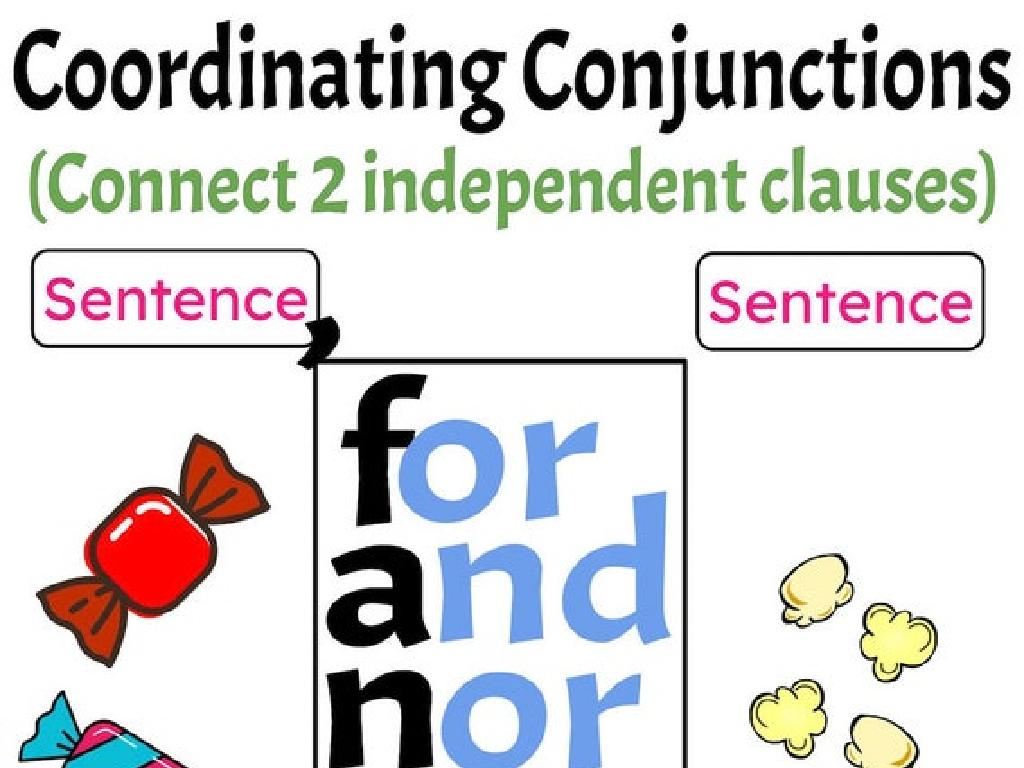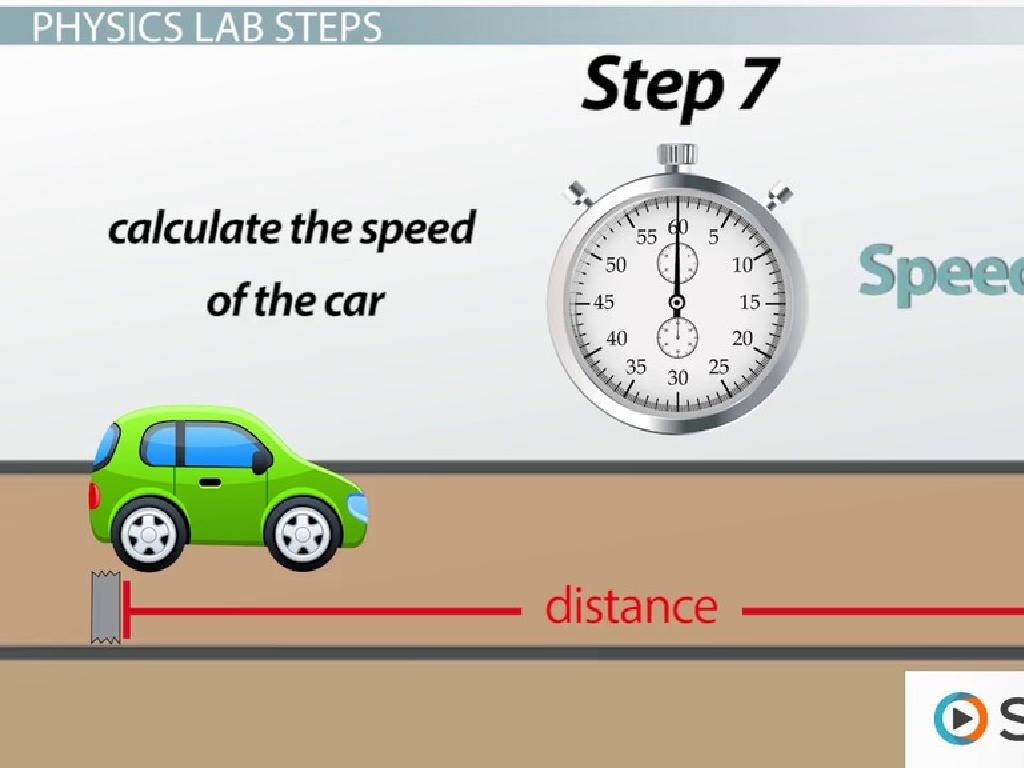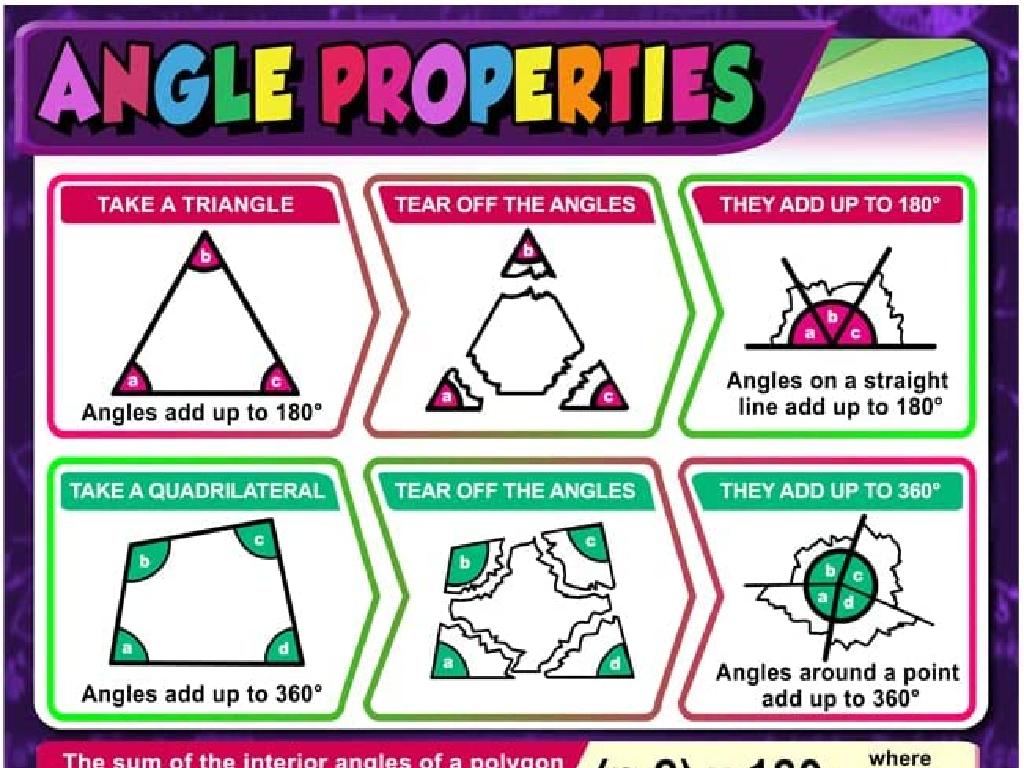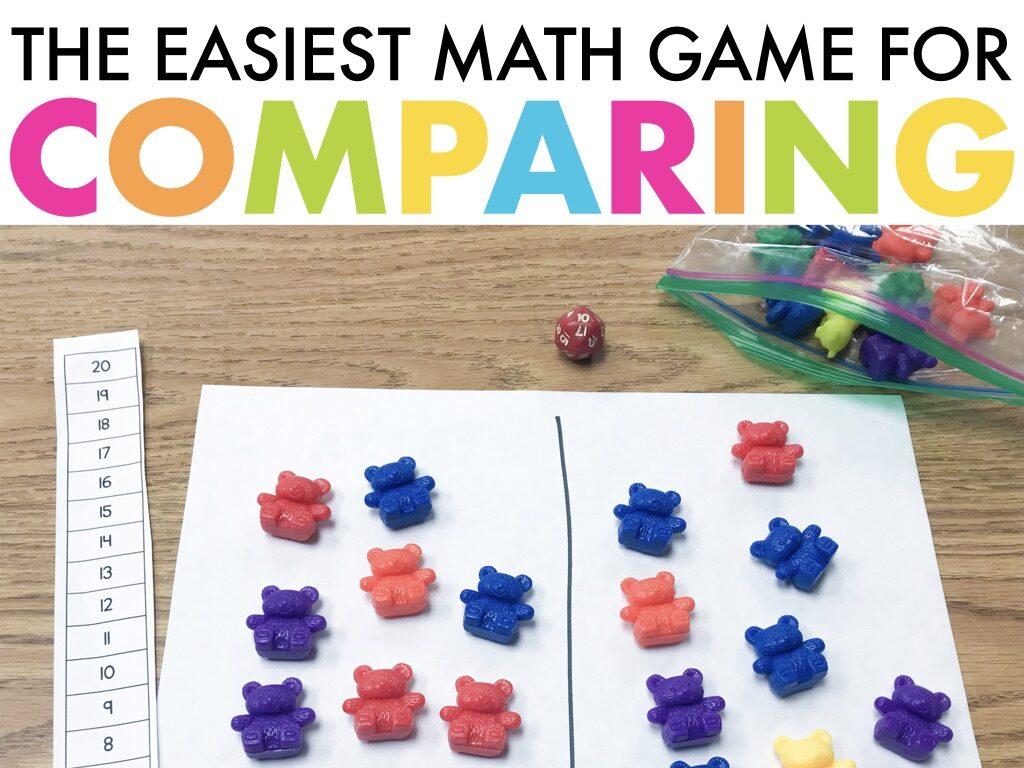Fractions Of A Number I
Subject: Math
Grade: Fifth grade
Topic: Multiply Fractions And Whole Numbers
Please LOG IN to download the presentation. Access is available to registered users only.
View More Content
Introduction to Fractions
– Fractions represent parts of a whole
– Fractions in everyday life
– Pizza slices, a glass of water, and sharing candy are common examples
– Review: Numerator atop Denominator
– Numerator: number of parts we have. Denominator: total parts in the whole
– Visualizing fractions with examples
– Draw a circle (pizza), divide into equal parts, shade the fraction we’re discussing
|
Begin with a basic explanation of fractions, emphasizing that they represent parts of a whole. Use tangible examples like slices of pizza or a glass of water to illustrate fractions in a way that is relatable to fifth graders. Review the terms numerator and denominator, ensuring students understand that the numerator indicates the number of parts being considered, while the denominator represents the total number of equal parts in the whole. Use visual aids like drawings or fraction circles to help students visualize fractions. This will set a strong foundation for understanding how to multiply fractions and whole numbers.
Multiplying Fractions by Whole Numbers
– Understanding fraction multiplication
– Multiplying a fraction by a whole number combines the fraction that many times.
– Visual aids for fraction multiplication
– Use pictures like pie charts to show parts being combined.
– Step-by-step multiplication guide
– Multiply the whole number by the numerator, keep the denominator same.
– Practice with examples
|
This slide introduces the concept of multiplying fractions by whole numbers. Begin by explaining that when we multiply a fraction by a whole number, we are essentially adding the fraction to itself that many times. Visual aids, such as pie charts or fraction bars, can be extremely helpful in showing this concept. Walk the students through the step-by-step process: multiply the whole number by the numerator and leave the denominator unchanged. Then simplify if possible. Provide several examples for the students to work through, starting with simple ones and gradually increasing in difficulty to ensure understanding.
Multiplying Fractions with Whole Numbers
– Example: 1/2 x 4
– Half of 4 is 2, so 1/2 x 4 = 2
– Use visual aids for understanding
– Draw a picture of a pizza cut into halves, multiply one half by 4
– Break down the multiplication steps
– Step 1: Multiply the numerator by the whole number. Step 2: Keep the same denominator.
– Practice with similar examples
– Try 1/3 x 6 or 3/4 x 8 to reinforce the concept
|
This slide introduces the concept of multiplying fractions by whole numbers. Start with a simple example, 1/2 x 4, and explain that multiplying by a fraction is like finding a part of the whole number. Use visual aids, such as a drawing of a pizza cut into halves, to help students visualize the process. Break down the steps: multiply the numerator (1) by the whole number (4) to get 4, and since the denominator is 2, the answer is 4/2, which simplifies to 2. Encourage students to practice with additional examples to solidify their understanding. The goal is for students to become comfortable with the process and recognize patterns in multiplying fractions with whole numbers.
Multiplying Fractions with Whole Numbers
– Practice Problem 1: 3/5 x 7
– Multiply the numerator (3) by the whole number (7), then divide by the denominator (5).
– Practice Problem 2: 2/3 x 6
– Multiply the numerator (2) by the whole number (6), then divide by the denominator (3).
|
This slide is designed for a class activity where students will practice multiplying fractions with whole numbers. For Problem 1, guide the students to multiply 3 (the numerator of the fraction) by 7 (the whole number) to get 21, and then divide that by 5 (the denominator) to find the answer. For Problem 2, students will multiply 2 (the numerator) by 6 (the whole number) to get 12, and then divide by 3 (the denominator) to find the answer. Encourage students to simplify their answers if possible. Provide additional problems for students who finish early or need extra practice, and be ready to assist any students who are struggling with the concept.
Group Activity: Fraction Multiplication
– Receive fraction and whole number cards
– Create a story problem with your cards
– Use the cards to make a fun, relatable problem
– Solve your fraction multiplication
– Apply multiplication to find the product
– Share your story and solution
– Explain your thinking to the class
|
This interactive group activity is designed to help students understand the concept of multiplying fractions with whole numbers through a hands-on approach. Each group will be given a set of cards with fractions and whole numbers. They will use these to craft a story problem that integrates the given numbers, encouraging creativity and application of mathematical concepts. After creating their story, students will solve the multiplication problem presented in their story. Finally, each group will present their story and solution to the class, explaining their thought process. This will not only reinforce their understanding but also improve their communication and problem-solving skills. For the teacher: Prepare sets of cards with different fractions and whole numbers. Monitor the groups to ensure they understand the multiplication process and guide them in crafting their stories. Encourage groups to listen to each other’s presentations and ask questions.
Class Discussion: Solving Fraction Story Problems
– Share your fraction story problems
– Discuss various solving strategies
– Compare using visual models vs multiplication
– Engage in Q&A to clarify doubts
– Ask questions if you’re unsure about a problem
– Reflect on the learning process
|
This slide is meant to facilitate a class discussion on applying fractions to real-world scenarios through story problems. Encourage students to share the story problems they’ve created, involving fractions of a number. Foster a collaborative environment where students can discuss different strategies they used to solve the problems, such as drawing visual models or using multiplication. The Q&A segment is crucial for addressing any misunderstandings and reinforcing concepts. As a teacher, guide the discussion, ensure every student is engaged, and provide feedback. Possible activities include peer review of story problems, group problem-solving, and individual presentations of solutions. The goal is to deepen students’ understanding of fractions in a supportive, interactive setting.
Homework: Multiplying Fractions with Whole Numbers
– Practice multiplying fractions
– Complete the provided worksheet
– Finish all the problems on the worksheet
– Solve various fraction problems
– Use multiplication to find fractions of numbers
– Review answers in the next class
|
This homework assignment is designed to reinforce the concept of multiplying fractions by whole numbers. Students are expected to complete a worksheet that provides a variety of problems, ensuring they get ample practice with the concept. The worksheet should include problems of increasing difficulty to challenge the students appropriately. In the next class, we will review the answers to help students understand any mistakes and solidify their learning. Encourage students to try solving the problems on their own before seeking help, as this will build their problem-solving skills. Provide examples on the worksheet such as ‘What is 1/2 of 8?’ or ‘Multiply 3 by 3/4.’
Mastering Fraction Multiplication
– Recap: Multiplying fractions by whole numbers
– Remember to multiply the numerator by the whole number
– Mastery is key in math proficiency
– Understanding this prepares you for more complex math
– Keep practicing, you’re doing great!
– Apply skills to real-world problems
– Example: Finding half of a recipe or a full recipe doubled
|
This slide aims to reinforce the concepts learned about multiplying fractions by whole numbers. Emphasize the importance of mastering this skill as it is foundational for future mathematical concepts and real-world applications, such as adjusting recipes or splitting items into portions. Encourage the students by acknowledging their efforts and progress. Remind them that practice is key to becoming confident in their skills. Provide examples of how they can apply what they’ve learned to everyday situations to make the concept more relatable and engaging.





